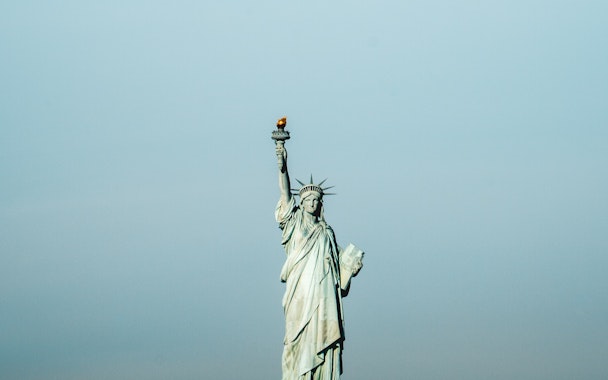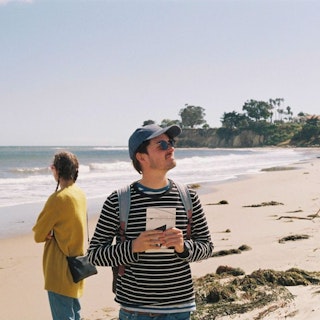‘I believe in the DNA of New York City’ – agencies doubling down in the Big Apple
Cities have changed, and they will continue to. Some changes have been imposed: on the long road out of the pandemic, metropolitan centers remain quiet. Others result from the work of those who make spaces and experiences. Over the next few months, we’re talking with leaders from The Drum Network in four of adland’s established centers – New York, London, San Francisco and Amsterdam – to look at the future of those cities’ creative topographies.

NYC agency leaders on the present and future of their city / Dan Calderwood via Unsplash
New York City is not the capital of the USA, or even of New York state, but many would still call it the capital of the world. Certainly, it holds a special spot in the popular imagination for brands and agencies. As Kristina McCoobery, Invnt’s chief operating officer says: “If you were to look at the footer of any major brand – or, frankly, major agency – that doesn’t show New York as one of their main cities, you’re going to get a head tilt from the world. ‘You’re not in New York? Why aren’t you good enough to be in New York?’”
With the much-vaunted post-pandemic re-centerings of power away from city centers and toward outer boroughs and less-expensive cities, is that hegemony going to erode? Not likely, says our panel.
The evolving patterns of placemaking: Times Square 2.0
Times Square is prime real estate for the advertising industry, and an essential destination for tourists – but a pain in the ass for New Yorkers. As Shana Bellot, co-managing director at StrawberryFrog puts it: “New Yorkers avoid Times Square, we don’t like it. We try to avoid all that stimulus around us.”
Kunal Muzumdar, managing director at Analogfolk, agrees: “It should probably make us a little bit sad that Times Square is a Mecca for our business and all of us avoid it like the plague.”
But if there’s one place that stands to benefit from boundary-pushing work in technology, out-of-home advertising and experiential marketing, it’s Times Square. Within two years, McCoobery says, we can expect a massive increase in genuinely impressive destination advertising that we got a taste of with Times Square’s 3D Fortnite x Balenciaga ad. We will see, she says, “massive services with incredibly engaging virtual reality and augmented reality”.
Times Square is an emblem, but it’s also a holding metaphor for the ways in which urban planners, experience designers, and other entrepreneurs will use new tech (not to mention a downward blip in business rents) to expand the city’s experiential horizons. For Ross Martin, president of Known, “the patterns of placemaking in New York are evolving in really interesting ways”.
The last decade offers plenty of case studies on bad placemaking – Hudson Yards, Martin says, is a “ghost town that tried to be the new heart of New York, with no beating heart” – as well as success stories: the Rockerfeller Center has “reinvented itself through collaboration” and, even if it’s a decade old, Rachel Shechtman’s store-experience-publishing environment Story remains a model to emulate.
Everybody’s now fighting for share of the weekend
With advertisers, brands and entertainment providers accessing better tech to expand their ability to surprise and delight punters, Martin says. “Everybody’s now fighting for share of the weekend… it’s a new competitive landscape”.
Hybrid experiences aren’t a fad; they’re a new way of understanding physical space and experience. Experiences “are meant to be shared with the masses who aren’t there in person, as anyone who wanders by or seeks out the experience”, says Kristi VanderBosch, Oliver’s president in the USA. The new question, she says, is: “How do I tell all the stories about what happens in that space to the tens of millions of people who aren’t there physically? It’s about programming it as though you were an editor, so that it’ll be a living, breathing thing.”
Doubling down
Beyond creating experiences, agencies in New York play another key role in shaping its creative landscape: deciding where, when and how a good chunk of the city’s creatives work. Are NYC rents – both personal and business – still worth it in this networked world?
Many have answered ‘no’, closing offices or getting out of the city entirely. But the good news, says Croud’s US managing director Kris Tait, is that “the deals out there are incredible”.
“Agencies have proven that they can work remote, it works,” Tait says, “but is ‘just working’ enough?” Here, our panel is almost unanimous: abandoning the city entirely is not an option. For Muzamdar, ‘office v home‘ is a false binary. “The question should be, ‘how do we take those elements and put them together in interesting ways?’”
AnalogFolk may even stop referring to its central hub as an office as it increasingly uses it “for different reasons and spend that money in different ways to set our teams up for success”, wherever they are. He adds that providers of shorter and more flexible rentals that might cater to more nomadic lifestyles might be seeing future success (WeWork, presumably, remains a cautionary tale).
It seems likely that major centers like New York will play a special role in this new ecosystem. As Martin says: “If you’re not setting up shop in a city where people want to be, with a climate and context for people to be what they want, you should close up shop and get out of that city really fast.” Growth, he says, will continue to depend for many on “creating experiences – physical, remote and hybrid – that compel people to want to jump in and be part of it”.
Jason Harris, co-founder and chief executive officer at Mekanism, has doubled down too, reconfiguring its space for a new role. “People get into advertising and marketing because we are misfits, but also very social – we love the interaction,” he says. “People go to New York for energy… you have to figure out a way to get people together. Otherwise, all that’s left is the grind, and that’s not why people love advertising”.
Want to get your opinion heard? Connect with agency leaders from around the world and get exclusive profiling opportunities with The Drum Network. Find out more.
Content created with:

OLIVER
Our unique model moves at the speed of modern business to drive change from the inside out; working smarter to make our clients’ money go further, and helping...
Find out more
Known
Known is a modern marketing company that pairs Ph.D. data scientists with award-winning creatives, expert research teams and strategists who leverage machine learning,...
Find out more
Mekanism
We are a fiercely independent ad agency that blends creativity and performance to build great brands.
Find out more
AnalogFolk
Our mission is to use digital technology to make the analog world better and to also be an impactful agency of change for people, brands and society, in pursuit...
Find out more
[INVNT GROUP]
[INVNT GROUP] THE GLOBAL BRANDSTORY PROJECT™ was established as an evolution of the founding global live brand storytelling agency INVNT in 2008, with a vision...
Find out more
Croud
Croud is a global, full-service digital agency that helps businesses drive sustainable growth in the new world of marketing. With a rich heritage in performance,...
Find out more
StrawberryFrog
StrawberryFrog is the world’s first Movement Marketing firm. We are a marketing, advertising, design and digital company based in New York City. Brand-fueled marketing...
Find out more
